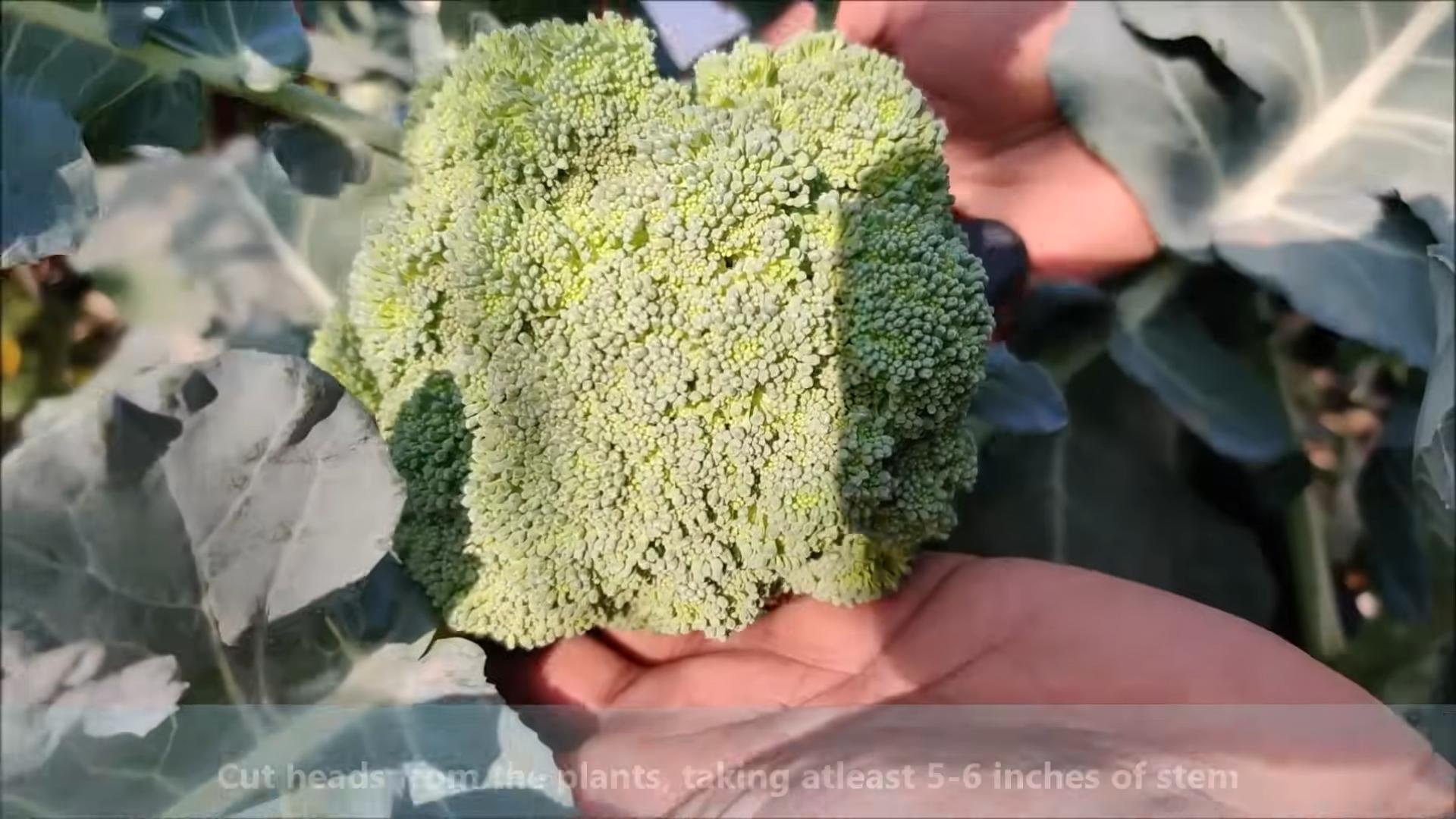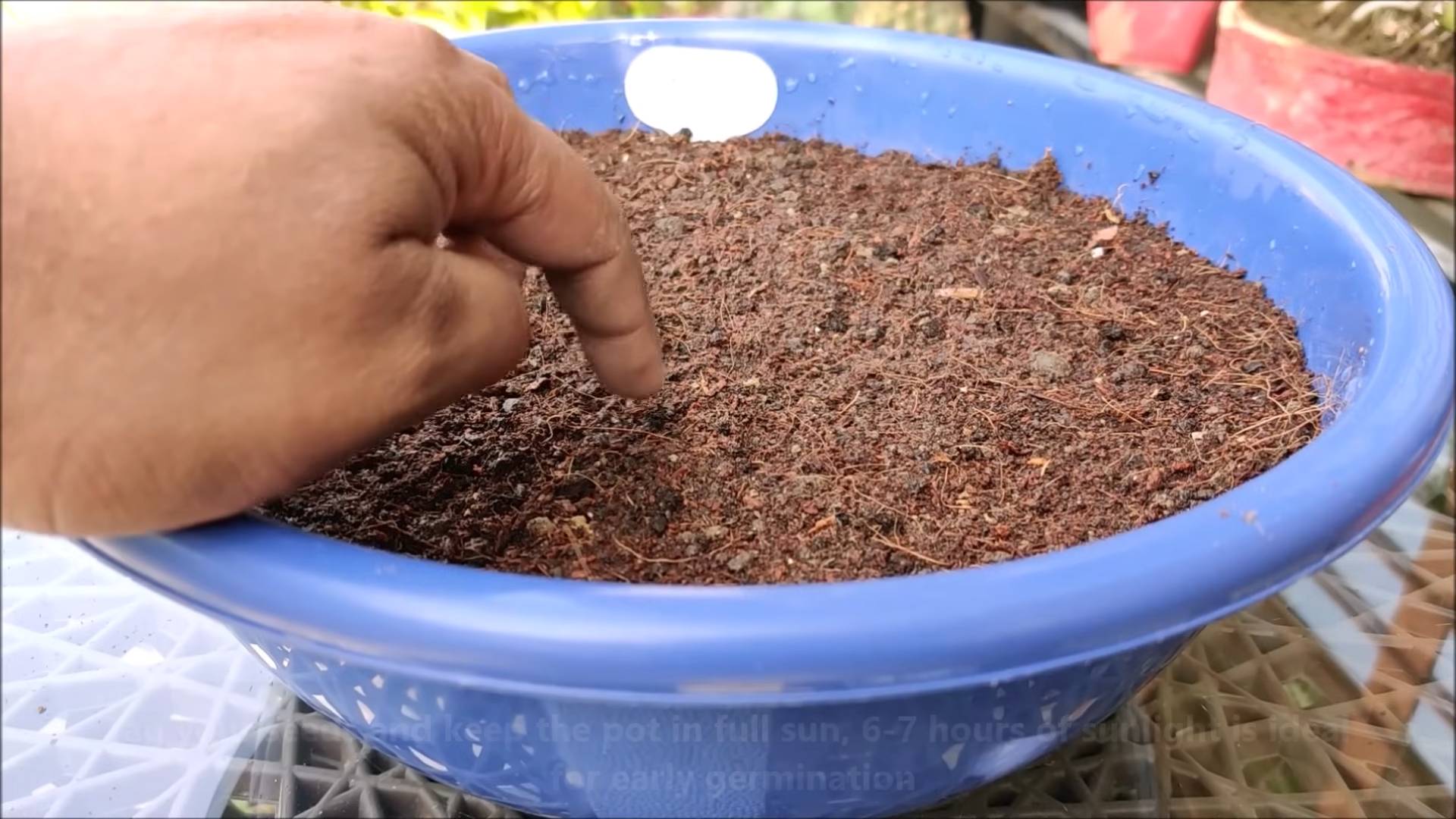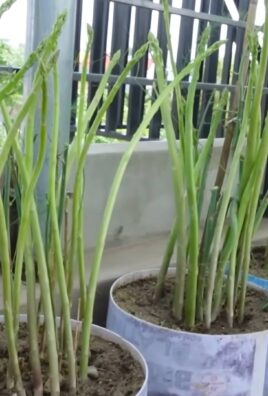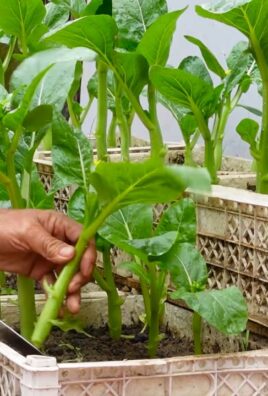Grow Broccoli at Home: Your Guide to a Bountiful Harvest
Have you ever dreamed of biting into a crisp, tender broccoli floret, knowing you grew it yourself, from seed to plate? Then you’ve come to the right place! This article is your complete guide to Grow Broccoli at Home, revealing simple yet effective tricks and DIY solutions to ensure a successful and rewarding home gardening experience. I’ll share my own hard-earned wisdom and proven techniques, transforming your backyard or even a small balcony into a thriving broccoli patch.
Growing your own food has a rich history, connecting us to our agricultural roots and offering a sense of accomplishment unlike any other. From ancient civilizations cultivating crops to the modern-day resurgence of home gardening, the practice has always provided nourishment and a deep connection to nature. And let’s be honest, there’s nothing quite like the taste of homegrown vegetables!
Why Grow Your Own Broccoli?
In today’s world, knowing where your food comes from is increasingly important. Growing broccoli at home allows you to control the growing process, avoiding pesticides and ensuring the freshest, most nutritious broccoli for your family. Plus, it’s incredibly satisfying to watch your tiny seedlings grow into robust plants, bursting with vibrant green florets. This DIY approach is not only cost-effective in the long run but also incredibly rewarding, offering a fantastic opportunity to connect with nature and enjoy the fruits (or rather, vegetables!) of your labor.
So, whether you’re a seasoned gardener or a complete beginner, get ready to embark on this exciting journey with me. Let’s discover the secrets to successfully grow broccoli at home and harvest your own delicious, healthy broccoli!

Growing Broccoli at Home: A Step-by-Step Guide
I love the taste of fresh broccoli, and nothing beats the satisfaction of growing your own. It might seem daunting, but trust me, it’s easier than you think! This guide will walk you through the entire process, from seed to harvest.
Choosing Your Broccoli Variety and Starting Seeds
- Select a variety: Research different broccoli varieties. Some are better suited to specific climates. Consider factors like growing season length in your area and whether you prefer heading (large central head) or sprouting (multiple smaller heads) broccoli.
- Start seeds indoors (recommended): Broccoli needs a cool growing season, so starting seeds indoors 6-8 weeks before the last expected frost gives them a head start. This ensures a longer growing season and a better harvest.
- Use seed starting mix: Don’t use garden soil; seed starting mix is lighter and drains better, preventing damping off (a fungal disease that kills seedlings).
- Sow the seeds: Plant seeds about ¼ inch deep and 1 inch apart in small pots or seed trays. Gently water and cover with plastic wrap to maintain humidity.
- Provide light and warmth: Place the trays in a warm, sunny location (ideally 65-75°F). You might need grow lights to supplement natural sunlight, especially during shorter days.
- Thin seedlings: Once seedlings have two true leaves, thin them to one strong plant per pot. This gives each plant enough space to grow.
- Harden off seedlings: Before transplanting outdoors, gradually acclimate your seedlings to outdoor conditions. Start by placing them outside for a few hours each day, gradually increasing the time over a week.
Preparing Your Garden Bed
- Choose a sunny spot: Broccoli needs at least 6 hours of sunlight per day. A location with partial afternoon shade in hot climates is beneficial.
- Amend the soil: Broccoli thrives in well-drained, fertile soil. Test your soil’s pH; it should be slightly acidic (6.0-6.8). Amend with compost or other organic matter to improve drainage and fertility. A soil test kit from a garden center can help you determine your soil’s needs.
- Prepare the bed: Till or loosen the soil to a depth of 12-18 inches. Remove any rocks or weeds.
- Water thoroughly: Before transplanting, water the garden bed deeply to ensure the soil is moist.
Transplanting and Ongoing Care
- Transplant seedlings: Once the danger of frost has passed, transplant your broccoli seedlings into the prepared garden bed. Space them 18-24 inches apart, depending on the variety.
- Water regularly: Keep the soil consistently moist, especially during dry periods. Water deeply and less frequently rather than shallowly and often to encourage deep root growth.
- Mulch: Apply a layer of mulch (straw, shredded leaves, or wood chips) around the plants to help retain moisture, suppress weeds, and regulate soil temperature.
- Fertilize: Side-dress with a balanced fertilizer (like a 10-10-10) a few weeks after transplanting. Follow package instructions carefully. Over-fertilizing can lead to excessive leaf growth at the expense of head development.
- Pest and disease control: Regularly inspect your plants for pests like aphids, cabbage worms, or slugs. Use organic pest control methods if necessary, such as insecticidal soap or diatomaceous earth. Good air circulation helps prevent fungal diseases.
- Monitor for signs of bolting: Bolting (premature flowering) can occur if the plants experience stress from heat or drought. Ensure consistent watering and consider providing some shade during the hottest part of the day.
Harvesting Your Broccoli
- Harvest the heads: Harvest the broccoli heads when they are firm and dark green, but before the florets start to open. Use a sharp knife to cut the head, leaving about 4 inches of stem.
- Harvest side shoots: After harvesting the main head, smaller side shoots will often develop. These can also be harvested.
- Proper storage: Store harvested broccoli in the refrigerator in a plastic bag. It’s best to use it within a few days for optimal freshness.
Troubleshooting Common Problems
Yellowing Leaves:
Yellowing leaves can indicate several issues, including nutrient deficiencies (especially nitrogen), overwatering, or pest infestations. Check your soil’s nutrient levels and adjust watering accordingly. Inspect for pests and treat as needed.
Small Heads:
Small heads can result from overcrowding, insufficient sunlight, nutrient deficiencies, or bolting. Ensure proper spacing, adequate sunlight, and fertilization. Address any stress factors that might cause bolting.
Pests:
Common broccoli pests include aphids, cabbage worms, and slugs. Regularly inspect your plants and use appropriate organic pest control methods to manage infestations.
Remember:
Patience and observation are key to successful broccoli growing. Don’t be discouraged if you encounter challenges along the way. Learn from your experiences, and you’ll be enjoying delicious homegrown broccoli in no time!

Conclusion
So there you have it – a comprehensive guide to growing your own broccoli at home! This DIY trick isn’t just about saving money on groceries; it’s about experiencing the unparalleled satisfaction of nurturing a plant from seed to harvest. The taste of homegrown broccoli, bursting with freshness and flavor, is simply unmatched. You’ll be amazed by the vibrant green heads you cultivate, far surpassing anything you’d find in a supermarket. Growing broccoli at home is a rewarding journey that connects you to the source of your food, offering a deeper appreciation for the natural world. It’s a project suitable for beginners and seasoned gardeners alike, offering a chance to learn about plant care and enjoy the fruits (or rather, vegetables!) of your labor.
Beyond the basic method outlined, there are countless ways to personalize your broccoli growing experience. Experiment with different varieties – from the classic green to the vibrant purple Romanesco – to discover your favorite. Consider companion planting, incorporating herbs like chamomile or dill nearby to deter pests and improve soil health. If space is limited, explore vertical gardening techniques or grow your broccoli in containers on your balcony or patio. For those with larger gardens, consider succession planting to enjoy a continuous harvest throughout the growing season. Don’t be afraid to get creative and adapt the techniques to your specific environment and preferences. The possibilities are endless!
We strongly encourage you to try this simple yet effective method of growing broccoli at home. It’s a fantastic way to introduce children to the wonders of gardening, teaching them about responsibility and the magic of nature. Share your experience with us! Post pictures of your thriving broccoli plants on social media using #GrowBroccoliAtHome and tag us. We’d love to see your success stories and learn from your experiences. Let’s build a community of home gardeners, sharing tips, tricks, and the joy of harvesting our own delicious, healthy broccoli.
Remember, even if you have a small space or limited gardening experience, you can still achieve amazing results. With a little patience, care, and attention, you’ll be enjoying the freshest, most flavorful broccoli you’ve ever tasted. So, what are you waiting for? Get your seeds, prepare your soil, and embark on this rewarding gardening adventure. The taste of homegrown success is waiting for you!
Frequently Asked Questions
What type of soil is best for growing broccoli?
Broccoli thrives in well-drained, fertile soil with a slightly acidic pH level (between 6.0 and 6.8). Amend heavy clay soils with compost or other organic matter to improve drainage and aeration. Sandy soils may benefit from the addition of peat moss or other organic materials to retain moisture.
How much sunlight does broccoli need?
Broccoli requires at least six to eight hours of direct sunlight per day to grow optimally. Choose a location in your garden that receives ample sunlight, especially during the crucial growing stages. Insufficient sunlight can lead to poor growth and reduced yields.
When is the best time to plant broccoli seeds?
The best time to plant broccoli seeds depends on your climate. In cooler climates, start seeds indoors six to eight weeks before the last expected frost. In warmer climates, you can direct sow seeds outdoors after the danger of frost has passed. Check your local frost dates for the most accurate planting schedule.
How often should I water my broccoli plants?
Water your broccoli plants regularly, keeping the soil consistently moist but not waterlogged. The frequency of watering will depend on your climate and soil type. During hot, dry periods, you may need to water more frequently. Aim for deep, infrequent watering rather than shallow, frequent watering to encourage deep root growth.
What are some common pests and diseases that affect broccoli?
Broccoli can be susceptible to pests such as aphids, cabbage worms, and flea beetles. Regularly inspect your plants for signs of infestation and take appropriate measures, such as handpicking pests or using organic pest control methods. Diseases like downy mildew and black rot can also affect broccoli. Ensure good air circulation around plants and avoid overhead watering to minimize disease risk.
How do I know when my broccoli is ready to harvest?
Broccoli is ready for harvest when the heads are firm, dark green, and tightly closed. The florets should be compact and not showing signs of flowering. Harvest the heads by cutting them with a sharp knife, leaving a few inches of stem attached. Harvesting at the right time ensures the best flavor and quality.
Can I save seeds from my homegrown broccoli to plant next year?
While you can attempt to save seeds from your homegrown broccoli, it’s important to note that broccoli is a hybrid plant, meaning the seeds may not produce plants identical to the parent plant. If you want to ensure consistent results, it’s best to purchase fresh seeds each year from a reputable supplier. However, saving seeds can be a fun experiment, and you might be surprised by the results!
What should I do with my broccoli harvest?
Enjoy your fresh, homegrown broccoli! You can eat it raw in salads, steam it, roast it, or use it in stir-fries and other dishes. Broccoli freezes well, so you can preserve your harvest for later use. Blanch the broccoli before freezing to maintain its color, texture, and nutritional value.




Leave a Comment